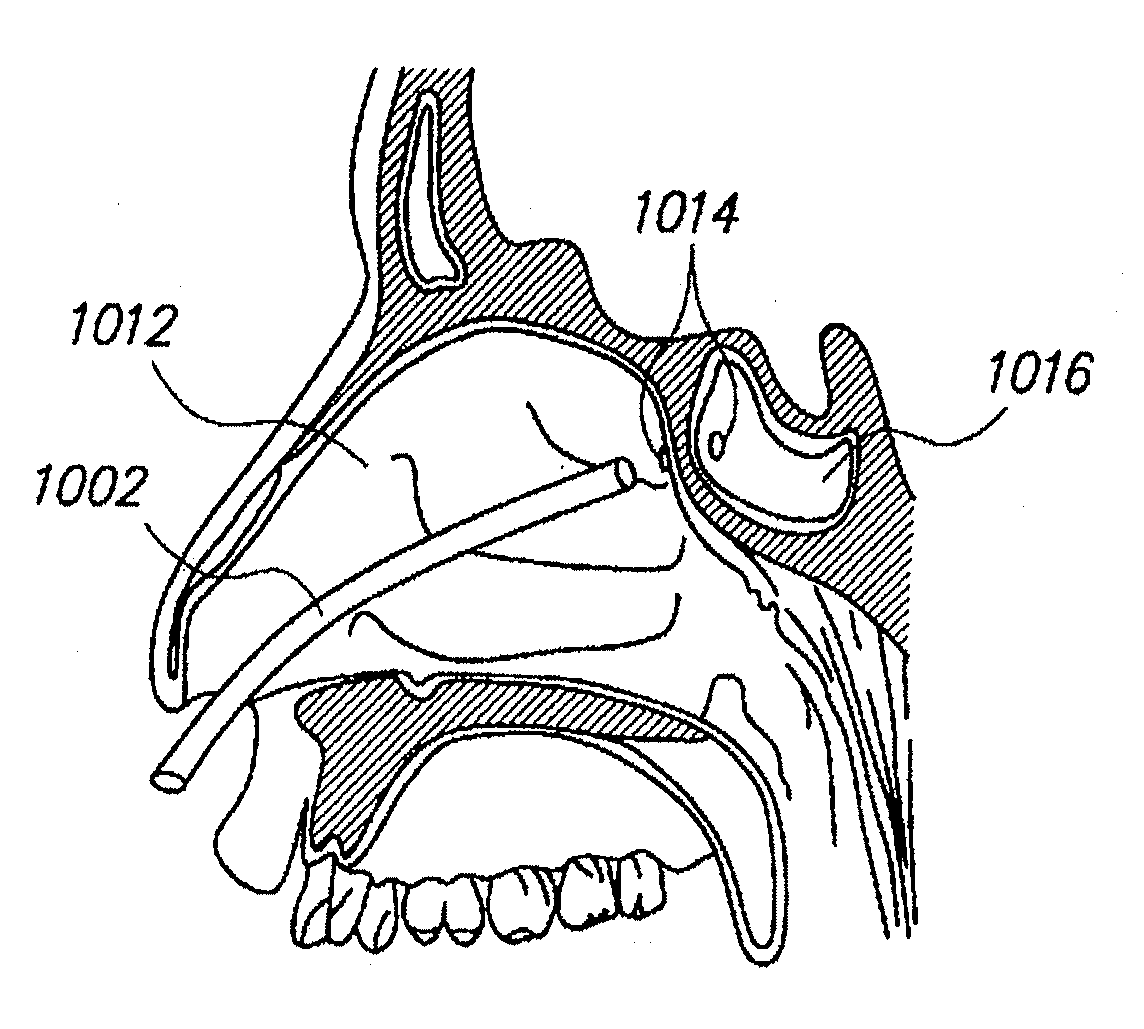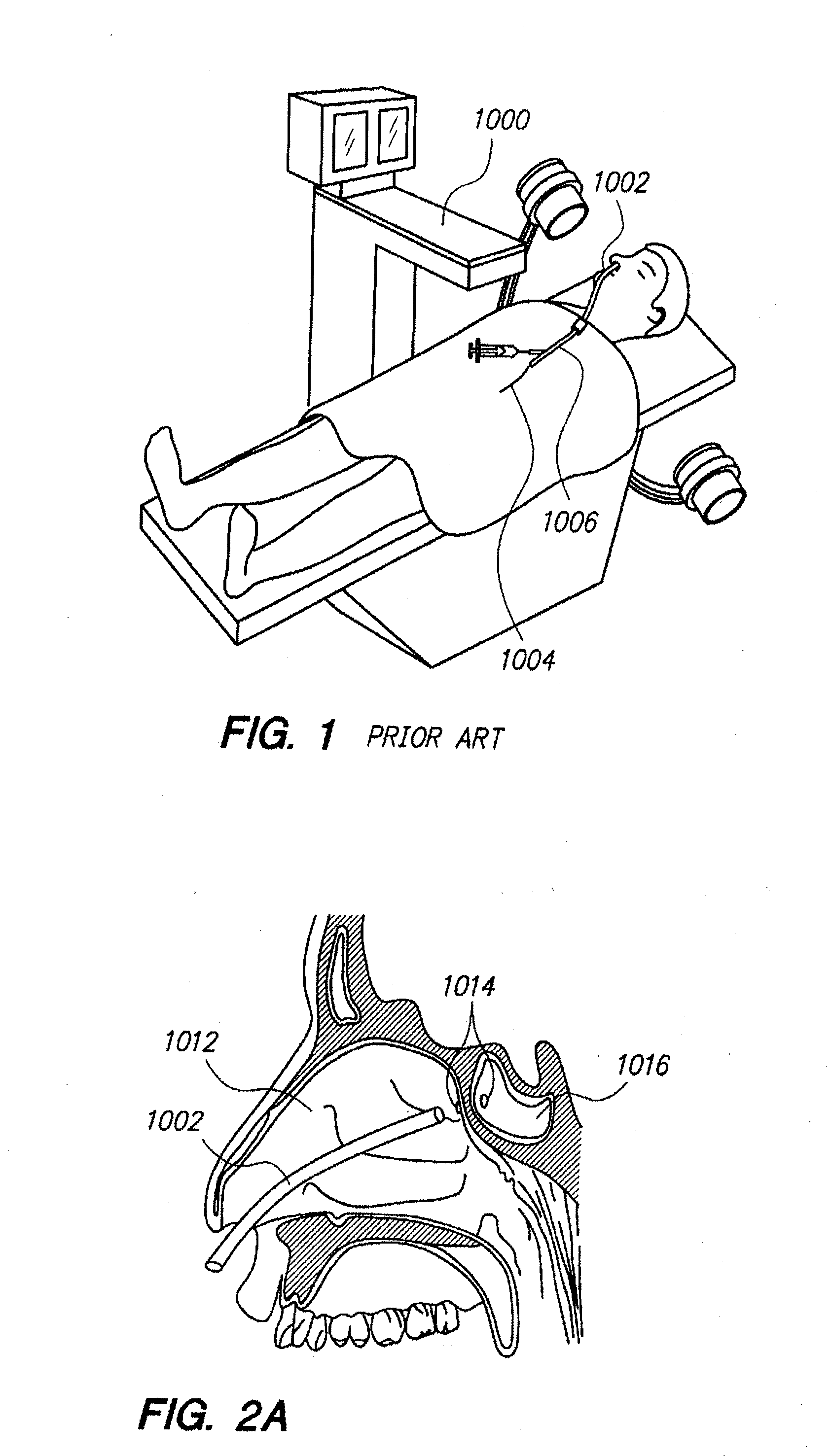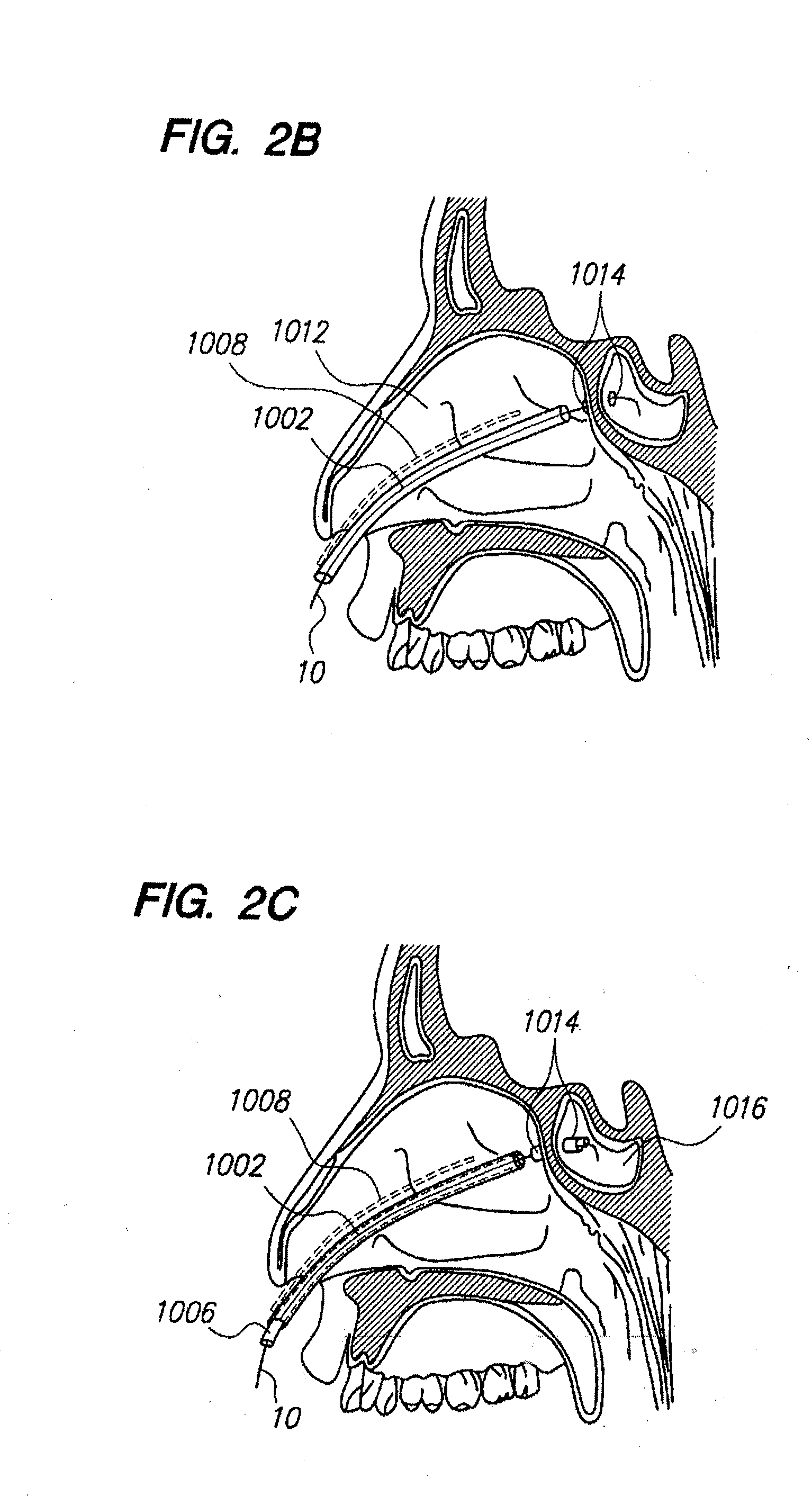Sinus illumination lightwire device
a lightwire device and sinus cavity technology, applied in the field of sinus cavity illumination lightwire devices, can solve the problems of damage to the epithelium that lines the sinuses, blocked passageways which drain through the sinuses, and mucosal congestion within the paranasal sinuses, and achieve the effect of facilitating visualization of target anatomy
- Summary
- Abstract
- Description
- Claims
- Application Information
AI Technical Summary
Benefits of technology
Problems solved by technology
Method used
Image
Examples
Embodiment Construction
[0178]The present disclosure provides an apparatus and method which eliminates or reduces a need for remote imaging techniques. To accomplish this, there is disclosed a medical device having desirable pushability and torquability so that an interventional site is accessed. The disclosed medical device embodies structure or includes components which are pre-treated so that it can accommodate forces applied thereto during operation.
[0179]Before the present devices and methods are described, it is to be understood that this invention is not limited to particular embodiments described, as such may, of course, vary. It is also to be understood that the terminology used herein is for the purpose of describing particular embodiments only, and is not intended to be limiting, since the scope of the present invention will be limited only by the appended claims.
[0180]Where a range of values is provided, it is understood that each intervening value, to the tenth of the unit of the lower limit u...
PUM
 Login to View More
Login to View More Abstract
Description
Claims
Application Information
 Login to View More
Login to View More - R&D
- Intellectual Property
- Life Sciences
- Materials
- Tech Scout
- Unparalleled Data Quality
- Higher Quality Content
- 60% Fewer Hallucinations
Browse by: Latest US Patents, China's latest patents, Technical Efficacy Thesaurus, Application Domain, Technology Topic, Popular Technical Reports.
© 2025 PatSnap. All rights reserved.Legal|Privacy policy|Modern Slavery Act Transparency Statement|Sitemap|About US| Contact US: help@patsnap.com



